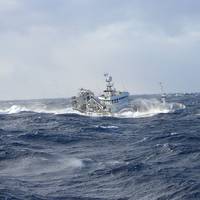IACS Adopts New Unified Requirement on Ammonia Releases

The International Association of Classification Societies (IACS) has developed a Unified Requirement (URH1) covering the release of ammonia from the onboard systems for bunkering, storing, preparing and using ammonia as fuel.IACS URH1 aligns with the Recommendations from U.S. National Institute for Occupational Safety and Health (NIOSH) and establishes that an ammonia concentration of 300 ppm or more is immediately dangerous, and a concentration of 25 ppm or more is dangerous if the exposure is longer than eight hours.Additionally…
FAO on Fishing Vessel Safety Work
While exact figures are hard to come by, preliminary, conservative estimates of fatalities in fishing are now over 32 000 people annually. The UN Food and Agriculture Organization (FAO) says that the number of fishers injured or suffering from work-related illnesses are much higher. Fatalities and accidents have major impacts on fishers' families, fishing crews and fishing communities. These stark figures provided the background to talks at the Fifth International Fishing Industry Safety & Health Conference (iFish5) (10–13 June), in St. John’s, Canada. IMO’s Sandra Allnutt outlined International Maritime Organization (IMO)’s work to address fishing vessel safety. She emphasised the need for more countries to ratify the 2012 Cape Town Agreement on fishing vessel safety.
DNV GL Tackles Safety through Standards

New classification rules for U.S. fishing vessels address safety issues through collaboration, new rules and an eye towards economy. The commercial fishing industry fatality rate is 30 times higher than the average of other US industries. According to an analysis of commercial fishing fatalities for the period 2000 – 2009 conducted by the Alaska Pacific Regional Office of the National Institute for Occupational Safety and Health (NIOSH), vessel disasters account for 51 percent of fatalities, with the top two initiating events cited as flooding (25 percent) and instability (16 percent).
Coast Guard Offers Resources on Hazardous Materials
The United States Coast Guard has published a free resource CD-ROM that brings comprehensive chemical information to the fingertips of fire and safety service personnel responding to a hazardous materials incident. Users can search the database by a substance's color, odor, and physical appearance and use the data to plan for a safe and effective response. Chemicals are rated according to health risk, flammability, and reactivity, among other factors, using data from several sources. The CD-ROM, known as CHRIS+, contains several databases of chemical, physical, thermodynamic, toxicological, and fire properties. Weapons of Mass Destruction (WMD) First Responder's Guide, the Coast Guard's advice for responders to WMD incidents.
Coast Guard Offering Marine Safety and Survival Training in Port Orford
Commercial Fishing Vessel Safety officials from Coast Guard Sector Portland, Ore., will be presenting a hands-on safety and survival workshop for commercial fishermen in Port Orford, Ore., Monday and Tuesday and in Charleston, Ore., Wednesday and Thursday. Each of the the two-day hands-on safety and survival workshops demonstrates what type of marine survival equipment to have onboard, the workshop also conducts drills that meet Coast Guard requirements for commercial fishing vessels operating outside the 12-mile international boundary line. Participants will practice with emergency equipment to include lifejackets, life rafts, immersion suits, emergency positioning indicating radio beacons and fire extinguishers.





